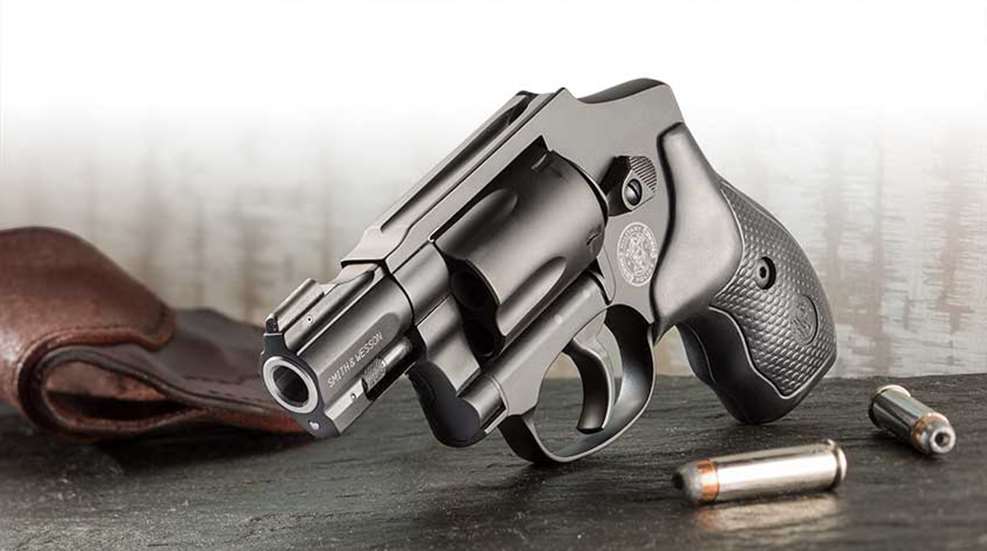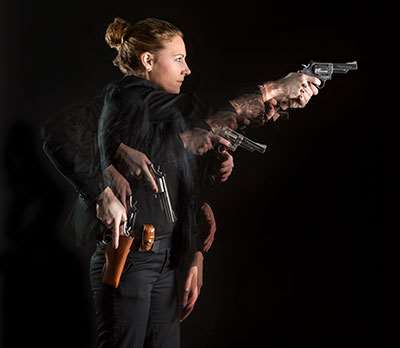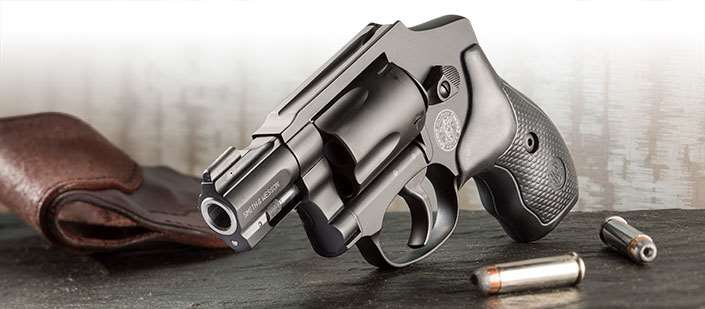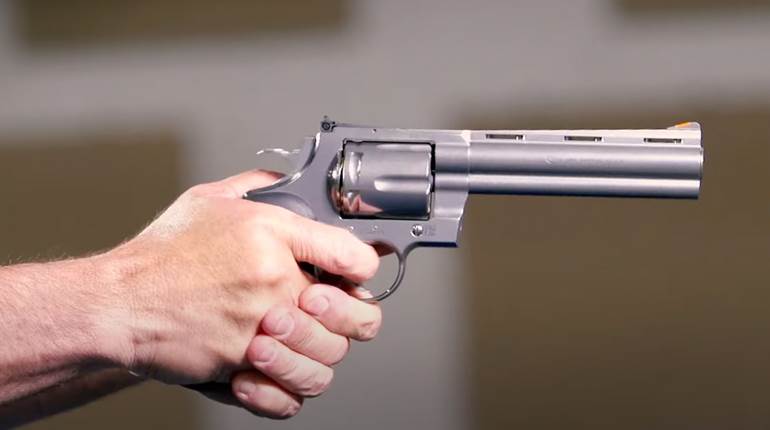
For no really good reason, there seems to be an attitude among prospective handgun buyers that holds the revolver in low esteem. In a majority of jurisdictions, Americans are legally permitted to carry firearms for personal defense and have long gravitated to the small, light, short-barreled revolver to play this role.
But times have changed and continue to change as I hunt and peck my way through this story. Shooters look into hideout guns of a different sort, largely because we now have hideout guns of a different sort. The short, light, flat, powerful and reliable defensive semi-automatic pistol is now a practical reality. They’re selling a lot of them, and they are crowding out the wheelguns.
So, we’ll look again at the compact revolver as a primary defensive tool, with a view toward stacking it up against the modern concealed-carry semi-automatic pistol. Understand at the outset that I do not scorn this latter class of pistol, but rather respect them for their positive impact on self-defense.
I have a number of them, shoot them fairly often and admire the ingenuity that created them. But the gun that habitually rides with me when I leave the house is a snubby revolver. I am talking about the small-frame revolver—Colt D Frames, Ruger LCRs and SP-101s, Smith & Wesson J-frames or Taurus Model 85s, principally chambered in .38 Spl./.357 Mag.—and not larger-frame wheelguns that take bigger cartridges and have absurdly short barrels.

Not so long ago, it was easier to make a case for the revolver over the pistol. That’s because the semi-automatics truly small enough to conceal and carry were woefully underpowered. We now have a really fine series of compact, polymer-frame, 9 mm Luger-chambered pistols, such as SIG Sauer’s P365, Springfield Armory’s Hellcat and S&W’s Shield among others.
Major developmental effort went into today’s 9 mm Luger ammunition, and it is much better than it was as recently as a few years ago. But, inevitably, the major reason shooters choose the semi-automatic over the revolver is capacity. Capacity beyond five or six rounds is not the case with the snubby revolver. The lure of a few more shots in that magazine is so strong that there are companies that make aftermarket extensions for pistol magazines that hold a few more shots. There’s nothing wrong with capacity, but it is not all there is to consider.
Realistically, what should a typical concealed-carry-licensed citizen require from his firearm? The gun is a tool, and how well it performs mechanically is no more important than how skillfully it is deployed. But a defensive gun should, first of all, be capable of delivering a fight-stopping shot, assuming that the shooter does his part. Gun and cartridge combinations that have good performance records are fine, but those with the very best records are what you need.
This is not a cut-and-dry situation we’re discussing, but rather a life-threatening crisis. The present state of affairs in the concealed-carry world is such that there is a power advantage in the compact revolver over the semi-automatic. Ruger, S&W and Taurus all make snubby revolvers in .357 Mag., and Colt just added that chambering with the King Cobra. And there is not much doubt that the old mid-1930s magnum has a huge record of success in stopping events that need to stop.

The latest breed of compact semi-automatic carries the same virtues that handgunners of a century-plus past found on the Borchardt, Browning, Bergmann, et. al. Unfortunately, many of the same vices are also there. The reason these things were called semi-automatic pistols was because they reloaded their own chambers. When a charge of powder burned, it forced a bullet down the barrel and out. But, in the rearward vector, that energy cycled the action and caused the gun to extract, eject, feed and chamber for subsequent shots.
If, for any reason, that first round failed to develop the necessary energy, the gun was useless. The shooting schools all teach effective techniques for quickly resolving such malfunctions, so pay close attention on Tuesday afternoon drills (at Gunsite Academy). Unhappily, the worst of the semi-automatics to work the malfunction drills with is this new breed of small pistols. They are so small that there’s not a lot of contact surface.
In complete fairness to the polymer 9 mms, their reliability is superb; I have done stories on many of them, and I’ve often reported perfect functioning—100 percent. And, because they are replenished from pre-loaded magazines, they reload more quickly than revolvers—even when using the latter with speedloaders or strips.
Much has been made over the concealability of the two types of guns. At first, it seems like the semi-automatic would be easier to hide because it is thinner. In a belt-mounted holster, a slim pistol can really fit up tight under the kidney area. But in pockets, a semi-automatic often prints badly, since its basic shape is two straight lines intersecting at a slight angle.
It’s true that the cylinder in the center of the revolver’s mass makes for a bulky center section, but the overall irregular shape hides pretty well. You do have to use a hammerless design or clip the hammer spur off to get a snubby revolver smoothly out of the pocket. I would argue that the edge goes to a properly equipped snubby revolver, but I have to concede that the edge is really slim.
I am reasonably familiar with revolvers, and that familiarity skews my personal choices a bit. But the important hand movements that permit me to keep a revolver in action are simpler. For a revolver, it is a matter of (1) aim gun at justifiable target, (2) pull trigger, (3) repeat if necessary.
Checking the revolver’s status is possible with one hand and in only seconds; doing a press-check on a semi-automatic is a more complicated procedure. Fortunately, the designers of this new class of pistols have built safety measures into the lockwork of many of them and left the manual safety out.
Still, making the semi-automatic pistol work requires a greater awareness of what is happening in and around the gun. In the functionality sense, the revolver is a marvel of simplicity.

When we began this discussion, I never identified it as an effort to decide which type of handgun is best for the job. I was concerned with ensuring that, if shooters chose to reject the small revolver, they did so with some logic. That isn’t happening, and, with rare exceptions, the revolver is usually rejected simply because it only carries five rounds.
Reasonably believable statistics tell us that defensive shootings usually involve three or fewer shots, but the pages of the “Armed Citizen” tell us it often requires more than the average to stop the threat. If you want to use a pistol, you have some great ones from which to choose.
My presentation was of necessity rather brief, but there is one more point that is important. Anything a maker can do to build a defensive firearm that is simpler, smaller and lighter, the better I like it. There is a tendency to not take the gun when it creates a problem, and the time you decide not to take it will be the terrible day that you need it.
I’ve had many vigorous, if not heated, discussions about the wisdom of firing hot .357 loads in a snubby that weighs less than a pound, and I freely concede that it hurts. Having followed the development of those guns at Smith & Wesson closely, I know they are safe to shoot, but not much fun. In general, the snubbies are as viable as ever. By now there’s more than a few “yeah sure, but ... ” guys in the back row.






































